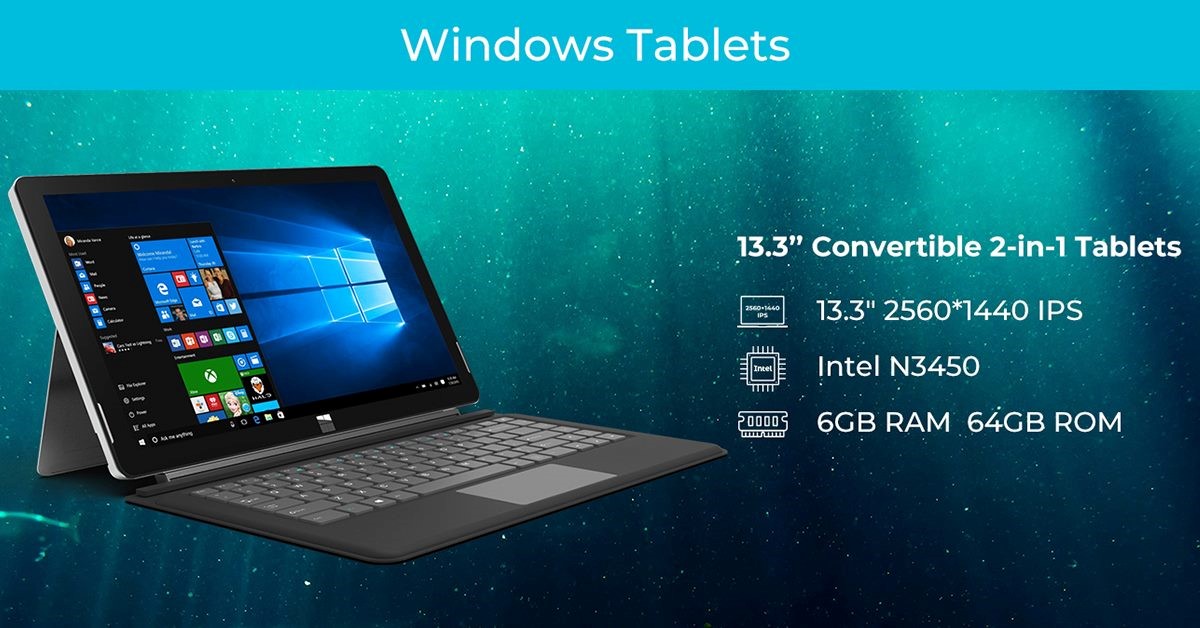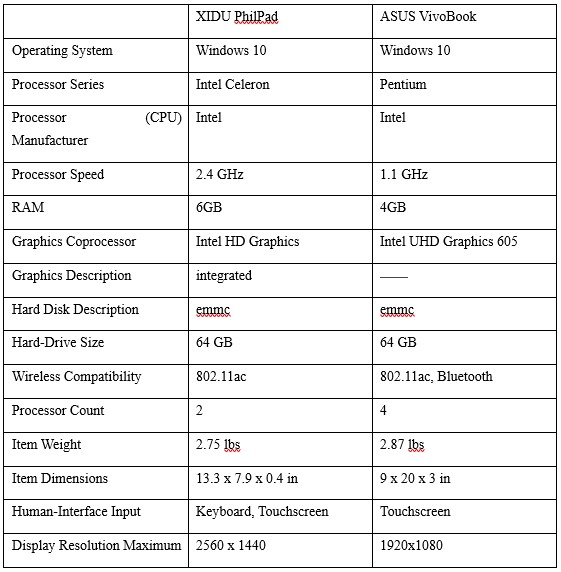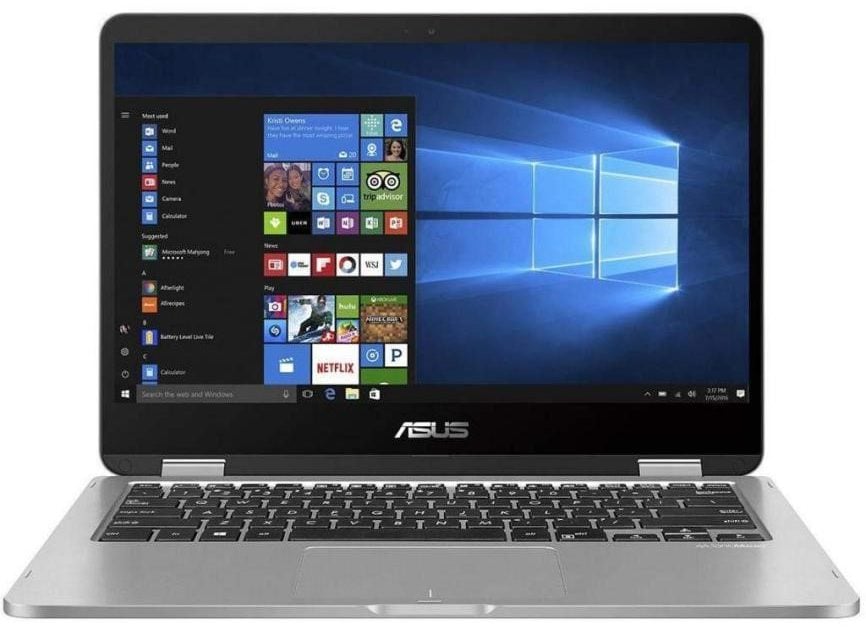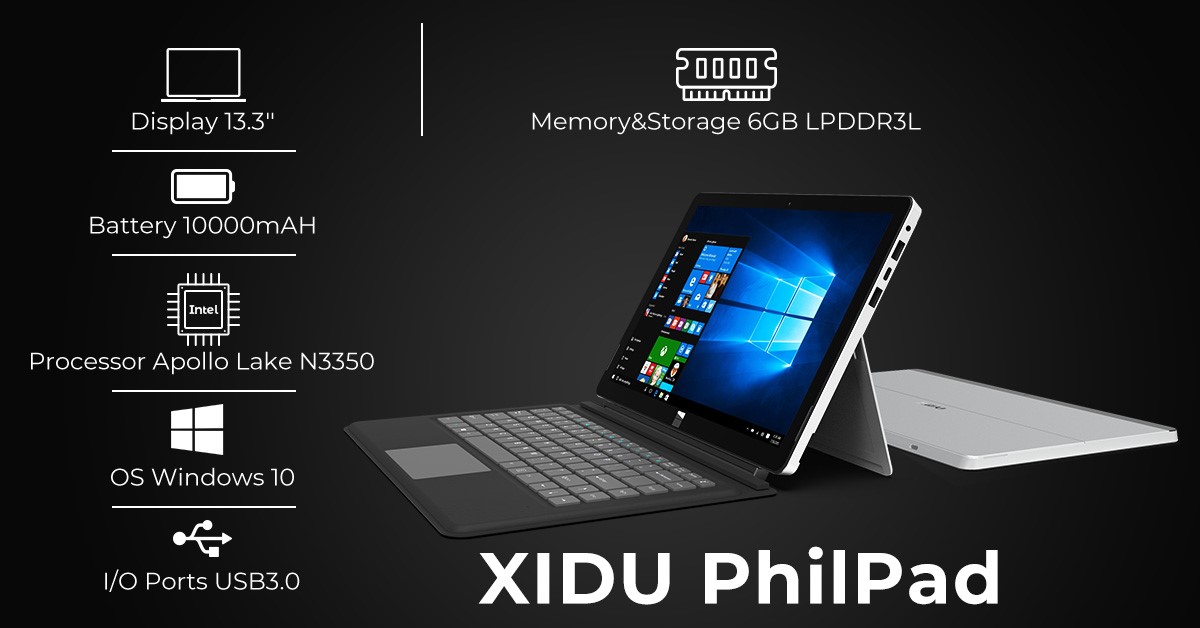XIDU is actively promoting its laptop and Windows 10 tablets lately and a question has risen whether these models are better than one from a known brand with a similar price. Today, we take a look at the XIDU PhilPad 13.3″ tablet and Asus VivoBook 14″. They belong to different categories since the former is a tablet and the latter is a notebook but their price is similar.
XIDU PhilPad has a better battery performance than the Asus VivoBook and it brings all-day battery life as well as a 2K (2560×1440) touchscreen display with IPS panel and easily upgradeable storage. On the other hand, the VivoBook comes with Bluetooth support but has less RAM than the PhilPad and that’s more important than Bluetooth support for most users.
Design comparison
With 17mm-thickness and 2.75 lbs weight, the PhiPad is slightly thinner and lighter than its opponent but both are quite portable undeniably. Of course, it is always easier and more convenient to carry a tablet than a laptop. Also, the PhilPad’s design in better with its metal case being impressive, but that’s subjective.
The VivoBook has an advantage when it comes to the display angle since it reaches all the way to 180 degrees flat whereas the PhilPad achieves 135 degrees but don’t forget the XIDU’s model is a tablet and you can just take off the detachable keyboard and use it as any other tablet. The keyboard provided is quite ergonomic and soft and using the kickstand of the tablet you can adjust it to your liking. Also, the PhilPad comes equipped with a pen as well!
When it comes to connectivity, VivoBook is the winner here as it has Bluetooth support via the Intel 802.11b/g/n/ac (2×2) Wi-Fi and Bluetooth 4.1 combo, 1 x USB 3.1 Type-C Gen 1, 1 x Micro USB 2.0, 1 x Micro HDMI, and headphone out/audio in combo jack. On the other hand, PhilPad lacks Bluetooth and comes with 1 x USB Type-C, 2 x USB 3.0, 1 x Microphone Jack, 1 x MicroSD card slot, 2 Speakers, 2MP front camera and 5MP rear camera that is something that VivoBook doesn’t have.
Display comparison
Usually, budget laptops come with low-resolution displays to cut costs but PhilPad comes with a 2K (2560 x 1440) display, far superior to the FHD display found on VivoBook. The good thing about both is that they use IPS panels that offer wide viewing angles and accurate color reproduction. Brightness is about the same in both laptops, and you might come up against issues using them in well-lit places. Other than that, both feature above average displays for their price with PhilPad being the winner thanks to the higher resolution.
Performance
When going for a budget laptop or tablet, you should expect some issues with performance when trying to run CPU-intensive tasks. The PhilPad’s Intel 4-core Apollo Lake N3350 CPU clocks up to 2.4GHz and delivers 30% more processing and 45% better graphics performance on Windows compared to its predecessors. Even some heavy games can run smoothly and the cool about this CPU is that it sports 4 cores for better multitasking instead of the dual-core Intel CPU found in VivoBook. What’s more, the PhilPad comes with 6GB of RAM, 50% more than the 4GB found on VivoBook. The difference in performance will likely not be noticed but it’s nice to know it’s there.
So, these are the main differences and similarities between the two contenders. If you are interested in the PhilPad, go ahead and visit their official store and grab some of the coupons provided for extra discount.










